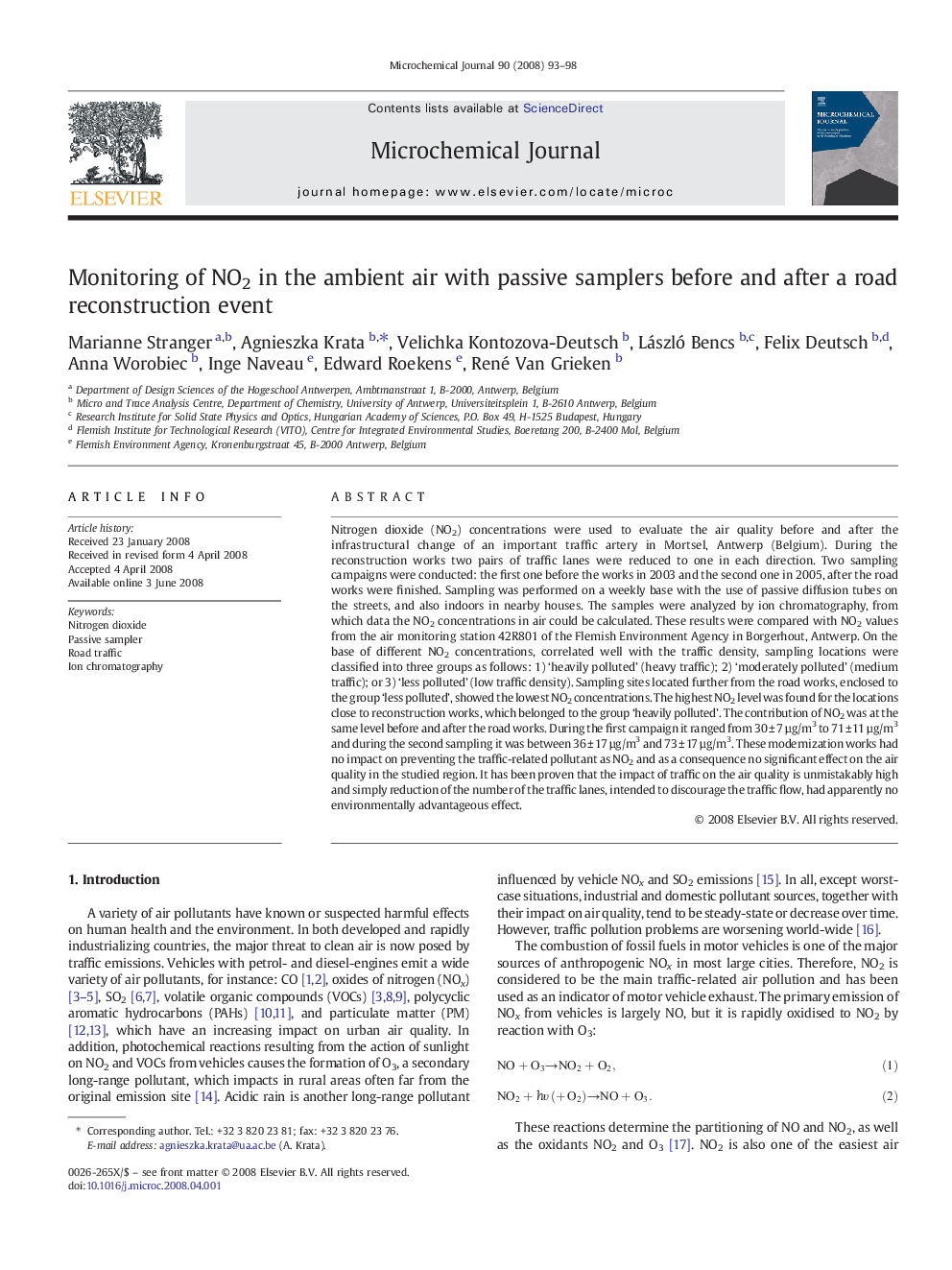| Article ID | Journal | Published Year | Pages | File Type |
|---|---|---|---|---|
| 1228077 | Microchemical Journal | 2008 | 6 Pages |
Nitrogen dioxide (NO2) concentrations were used to evaluate the air quality before and after the infrastructural change of an important traffic artery in Mortsel, Antwerp (Belgium). During the reconstruction works two pairs of traffic lanes were reduced to one in each direction. Two sampling campaigns were conducted: the first one before the works in 2003 and the second one in 2005, after the road works were finished. Sampling was performed on a weekly base with the use of passive diffusion tubes on the streets, and also indoors in nearby houses. The samples were analyzed by ion chromatography, from which data the NO2 concentrations in air could be calculated. These results were compared with NO2 values from the air monitoring station 42R801 of the Flemish Environment Agency in Borgerhout, Antwerp. On the base of different NO2 concentrations, correlated well with the traffic density, sampling locations were classified into three groups as follows: 1) ‘heavily polluted’ (heavy traffic); 2) ‘moderately polluted’ (medium traffic); or 3) ‘less polluted’ (low traffic density). Sampling sites located further from the road works, enclosed to the group ‘less polluted’, showed the lowest NO2 concentrations. The highest NO2 level was found for the locations close to reconstruction works, which belonged to the group ‘heavily polluted’. The contribution of NO2 was at the same level before and after the road works. During the first campaign it ranged from 30 ± 7 µg/m3 to 71 ± 11 µg/m3 and during the second sampling it was between 36 ± 17 µg/m3 and 73 ± 17 µg/m3. These modernization works had no impact on preventing the traffic-related pollutant as NO2 and as a consequence no significant effect on the air quality in the studied region. It has been proven that the impact of traffic on the air quality is unmistakably high and simply reduction of the number of the traffic lanes, intended to discourage the traffic flow, had apparently no environmentally advantageous effect.
